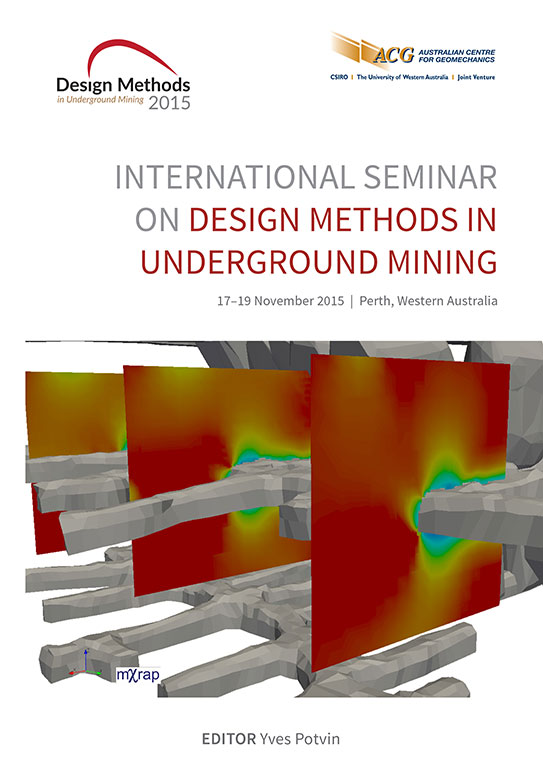Simulate waste rock flow during co-disposal for dilution control

|
Authors: Basson, FRP; Dalton, NJ; Barsanti, BJ; Flemmer, AL |
DOI https://doi.org/10.36487/ACG_rep/1511_32_Basson
Cite As:
Basson, FRP, Dalton, NJ, Barsanti, BJ & Flemmer, AL 2015, 'Simulate waste rock flow during co-disposal for dilution control', in Y Potvin (ed.), Design Methods 2015: Proceedings of the International Seminar on Design Methods in Underground Mining, Australian Centre for Geomechanics, Perth, pp. 515-525, https://doi.org/10.36487/ACG_rep/1511_32_Basson
Abstract:
Trucking waste material to surface in deep underground mines is costly, and the benefits of waste codisposal with cemented paste or hydraulic fill substantial. When co-disposing into primary stopes, a concern is that the waste could accumulate against a secondary stope wall and cause dilution during extraction of adjacent stopes. Waste flow can be controlled with the waste pass design, but dedicated software to simulate the waste flows into the stoping voids is not readily available. Rigid body dynamic physics engines are already used to simulate rockfalls in open pits, and the authors used the three-dimensional fall package Trajec3D to simulate rock flows from waste backfilling into stopes. The aims of the simulations are to gain an understanding of the waste flows, predict waste accumulation areas for different waste pass designs and select an appropriate rate of waste tipping. Cavity monitoring survey (CMS) triangulation files cannot be directly loaded in Trajec3D, as model preparation must first be done. The paper discusses the preliminary steps to set the model up correctly, the learnings from the authors’ simulation attempts, and the rock properties that could be used for simulations.
References:
Basson, FRP 2012, ‘Rigid body dynamics for rock fall trajectory simulation’, Proceedings of the 46th US Rock Mechanics/Geomechanics Symposium, American Rock Mechanics Association, Minneapolis, MN, 7 p.
Curran, JH & Hammah, RE 2006, ‘Seven lessons of geomechanics software development’, in DP Yale (ed.), Proceedings of the 41st US Symposium on Rock Mechanics (USRMS), American Rock Mechanics Association, Minneapolis, MN, 15 p.
Hummel, J, Wolff, R, Stein, T, Gerndt, A & Kuhlen, T 2012, ‘An evaluation of open source physics engines for use in virtual reality assembly simulations’, in G Bebis, R Boyle, B Parvin, D Koracin, F Charless, W Sen, C Min-Hyung, S Mantler, J Schulze, D Acevedo, K Mueller & M Papka (eds), Proceedings of the 8th International Symposium on Visual Computing (ISVC 2013), Advances in visual computing, Part II (LNCS 7432), Springer-Verlag, Berlin, pp. 346-357.
Lo, CM, Lin, ML & Lee, WC 2008, ‘Talus deposition pattern of rockfall through mechanical model and remote sensing technology’, Geophysical Research Abstracts, vol. 10.
© Copyright 2026, Australian Centre for Geomechanics (ACG), The University of Western Australia. All rights reserved.
View copyright/legal information
Please direct any queries or error reports to repository-acg@uwa.edu.au
View copyright/legal information
Please direct any queries or error reports to repository-acg@uwa.edu.au